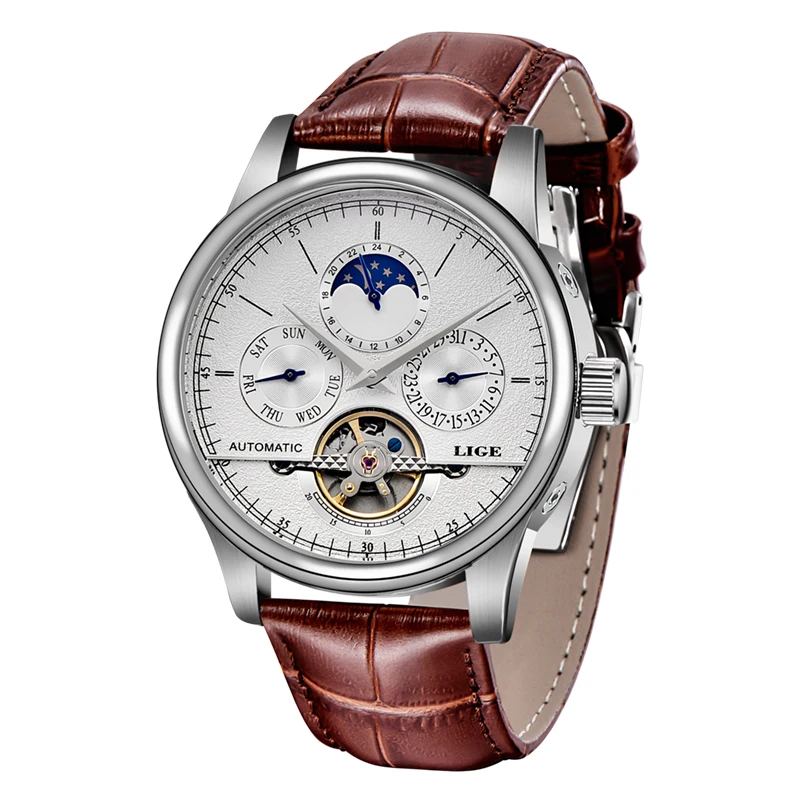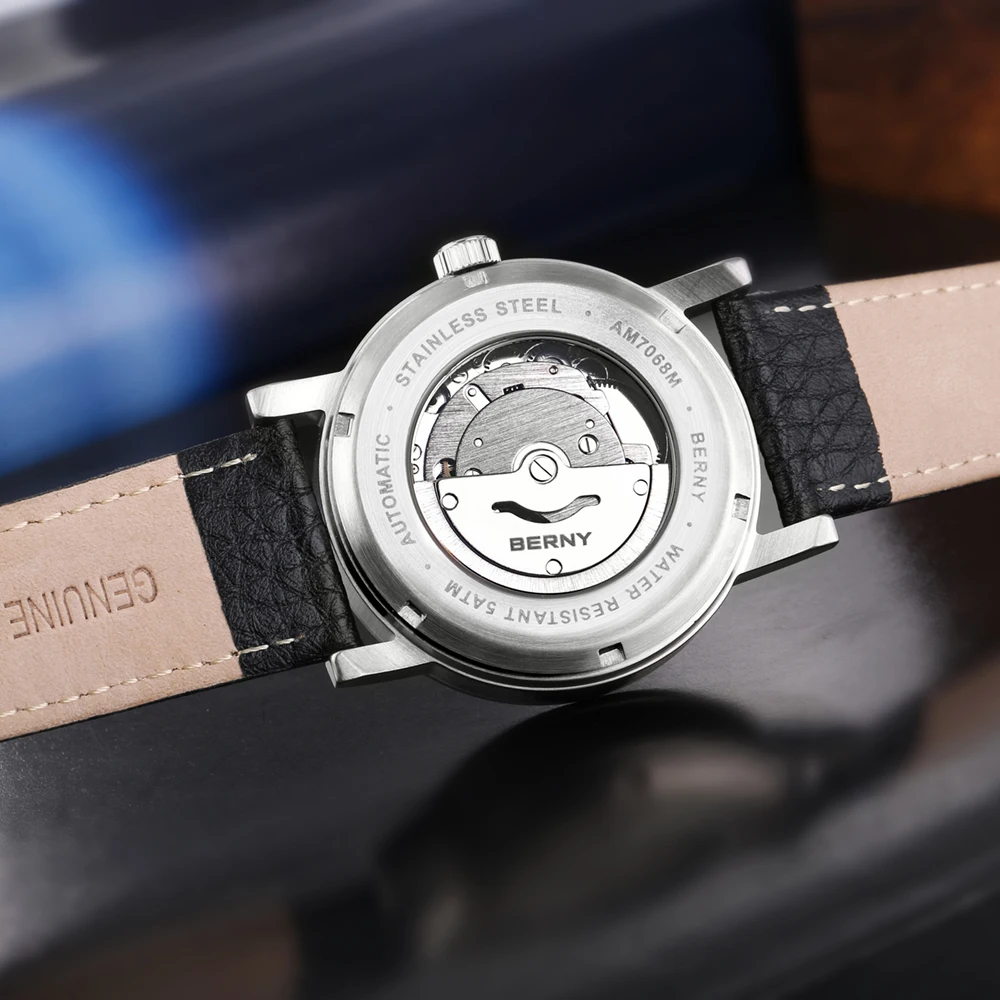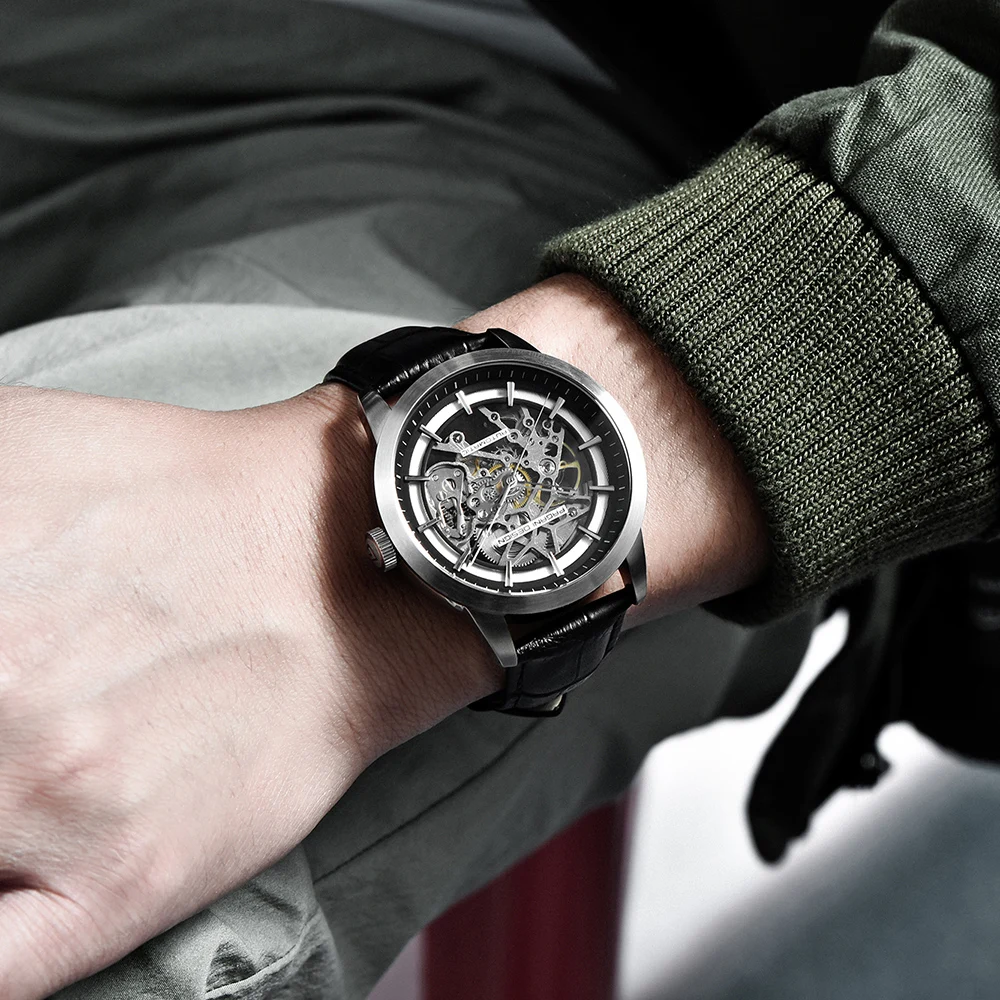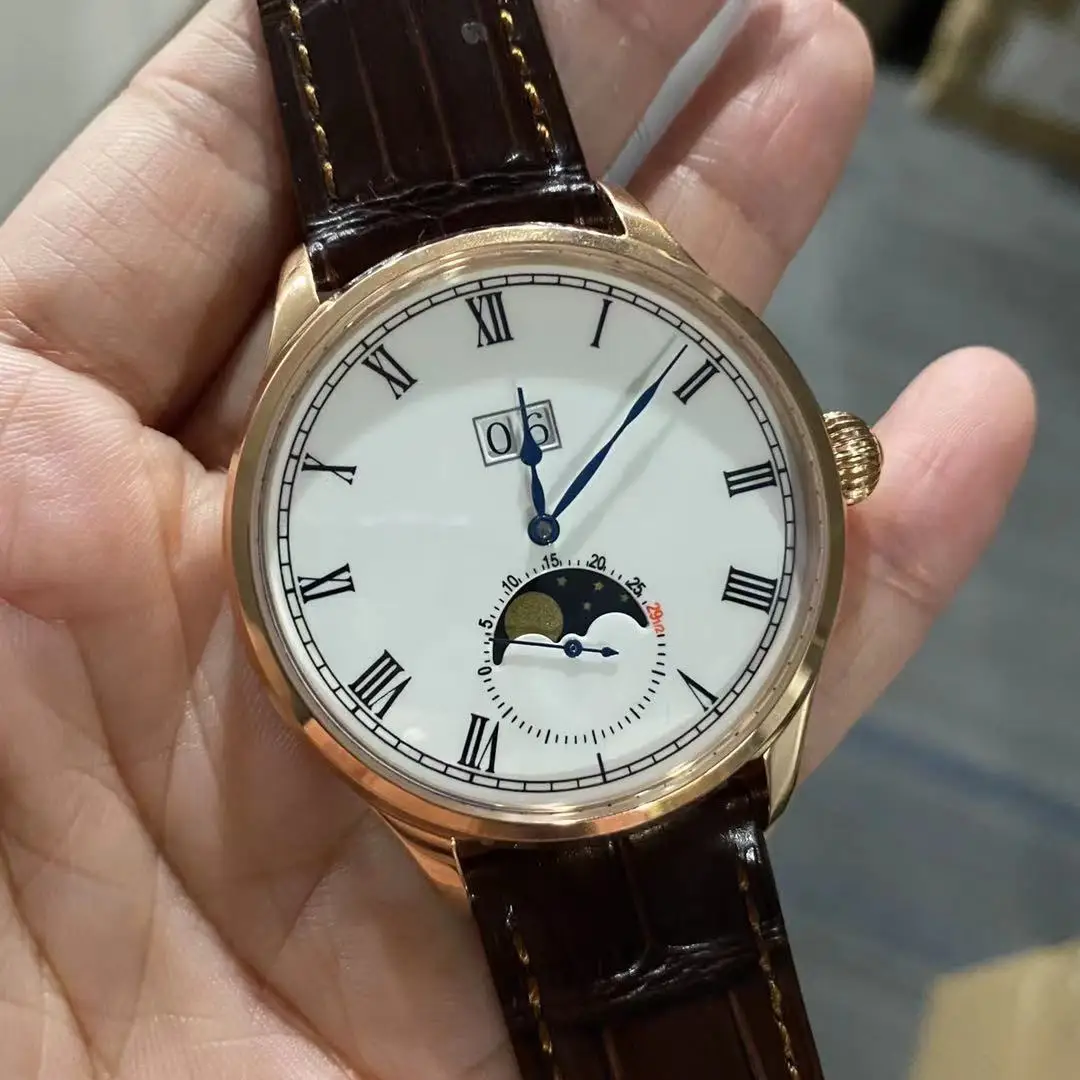The Timeless Fascination with Moon Phase Complications
The moon phase complication stands as one of horology’s most enchanting features – a perfect marriage of artistic expression and technical prowess. These specialized mechanisms do more than simply tell time; they track the waxing and waning of our celestial neighbor across its 29.53-day journey around the Earth.
What makes moon phase complications so captivating is their dual challenge: they must be both visually striking and astronomically accurate. The most impressive examples manage to transform complex celestial mathematics into tiny mechanical wonders that fit comfortably on your wrist.
This celestial tracking represents one of watchmaking’s most enduring technical achievements:
- The mechanism must precisely track the moon’s 29.53-day synodic cycle
- This irrational number must be translated into exact gear ratios
- The display must be both functional and aesthetically pleasing
- The system must maintain accuracy over years or even decades
The rich history of dive watch engineering shares similar precision challenges with moon phase complications, both requiring exceptional accuracy in adverse conditions.
While some simple moon displays merely suggest the lunar cycle, the most sophisticated astronomical moon phases can accurately track the moon’s position for centuries without adjustment. From the earliest astronomical clocks to today’s masterpieces of miniaturization, the quest to capture the moon’s rhythm continues to inspire watchmakers to new heights of innovation.
For those drawn to these celestial timepieces, exploring quality moonphase automatic watches reveals how different craftsmen approach this horological art form.
The Astronomical Reality: Understanding the Lunar Cycle Challenge
The fundamental challenge in creating moon phase complications stems from the nature of the lunar cycle itself. The synodic month – the time between two identical moon phases as seen from Earth – lasts precisely 29.53059 days (29 days, 12 hours, 44 minutes, and 2.8 seconds).
This seemingly simple cycle presents a profound mechanical challenge. Watchmakers must translate this irregular number into gear systems that operate with perfect predictability. The lunar cycle doesn’t align neatly with our calendar system or standard time measurements, creating a mathematical puzzle that has challenged horologists for centuries.
The visual progression of the moon through its phases adds another layer of complexity:
- New Moon (completely dark)
- Waxing Crescent
- First Quarter
- Waxing Gibbous
- Full Moon
- Waning Gibbous
- Last Quarter
- Waning Crescent
The mathematical hurdle is immense: how to create gear ratios that accurately reflect the 29.53059-day cycle using mechanical components with whole numbers of teeth. This requires clever approximation – the fundamental principle behind all moon phase mechanisms.
Understanding the variations in moonphase displays in horology shows how watchmakers have developed different approaches to this astronomical puzzle.
The Classic 59-Tooth Mechanism: Engineering Fundamentals Explained
The standard solution to the lunar synchronization challenge is the 59-tooth wheel – an ingenious mechanical compromise that has become the backbone of moon phase complications for generations. This mechanism uses a wheel with 59 teeth to represent two complete lunar cycles.
The basic engineering works through these key components:
- A 59-tooth wheel that rotates once every 59 days
- A drive system that advances the wheel by one tooth each day
- A moon disc mounted to the wheel, often featuring two identical moon faces
- A viewing aperture in the watch dial that reveals only the current phase
- A finger lever mechanism that pushes the wheel forward once every 24 hours
- Jumper springs that maintain precise positioning between advances
The mathematical elegance is apparent: since the wheel advances one tooth daily, each complete lunar cycle takes 59/2 = 29.5 days – remarkably close to the actual 29.53-day synodic month.

The gear train connects this system to the watch’s timekeeping mechanism, ensuring the moon display advances at exactly midnight. However, this approximation creates a small but measurable error – about 44 minutes per lunar cycle, which accumulates to roughly one day of error every 2.7 years.
For watches with additional features like date displays and annual calendars, the integration with perpetual calendar automatic watches creates even more complex gear systems that must work in perfect harmony.
The Mathematical Precision: Calculations Behind Lunar Synchronization
The pursuit of lunar accuracy in watchmaking ultimately becomes a mathematical challenge – finding gear ratios that closely approximate the actual 29.53059-day lunar cycle. The standard 59-tooth system creates a mechanical approximation of 29.5 days, which seems close but accumulates error over time.
Let’s examine the mathematical comparison:
Actual synodic month: 29.53059 days
Standard mechanism approximation: 29.5 days
Error per cycle: 0.03059 days (about 44 minutes)
This error compounds with each passing month:
– 0.03059 days × 12 months ≈ 0.367 days per year
– This equals approximately 1 day of error every 2.7 years
For the watch owner, this means the moon phase display requires adjustment roughly every 3 years to maintain accuracy. While this may seem reasonable for casual use, horological perfectionists have continually sought better approximations through increasingly complex gear systems.
The challenge becomes finding gear combinations that create ratios closer to the true lunar period. This optimization problem has sparked some of the most innovative mechanisms in watchmaking history, with craftsmen experimenting with different tooth counts and gear arrangements.
| Mechanism Type | Approximation | Error | Adjustment Needed |
|---|---|---|---|
| Standard (59-tooth) | 29.5 days | 44 min/month | Every 2.7 years |
| Improved (135-tooth) | 29.53125 days | 1 min/month | Every 122 years |
| Astronomical | 29.53058 days | 1 sec/month | Every 1,000+ years |
Understanding these mechanisms complements knowledge about other calendar features in mechanical watch calendar complications that face similar challenges of tracking irregular time periods.
Engineering Excellence: Advanced Moon Phase Mechanisms
While the 59-tooth system serves as the foundation for most moon phase displays, advanced watchmaking has developed significantly more accurate alternatives. The most common improvement is the 135-tooth system, which dramatically increases precision through a more complex gear train.
The 135-tooth mechanism works by:
– Using a wheel with 135 teeth rather than 59
– Advancing this wheel once per day by a specialized gear system
– Creating an approximation of 29.53125 days per lunar cycle
– Reducing error to just 1 minute per month (compared to 44 minutes in the standard system)
– Requiring correction only once every 122 years
This remarkable improvement comes from creating a better mathematical approximation of the actual lunar cycle through more complex gearing. The gear ratio 135/4.77 ≈ 29.53 achieves this enhanced accuracy.
Even more impressive are astronomical moon phases (sometimes called “perpetual moons”) that push precision to extremes:
– Ultra-precise gear systems with accuracy to 1 day error in 1,000+ years
– Multiple interconnected gear trains working in concert
– Specialized manufacturing techniques to create microscopic gear teeth
– Enhanced materials to minimize wear over centuries of operation
These complications represent the pinnacle of mechanical ingenuity, creating astronomical computers that fit on the wrist. The ultimate guide to moonphase watches explores these variations in greater detail, showing how different watchmakers approach this challenge.
A Horological Journey: The Evolution of Lunar Displays Through Time
The pursuit of capturing the moon’s rhythm mechanically dates back centuries, evolving from room-sized astronomical clocks to today’s wrist-worn masterpieces.
16th-17th Centuries: Early astronomical clocks in European town squares and observatories featured moon phase displays alongside complex planetary models. These monumental creations served both scientific and public purposes, helping astronomers track celestial movements while giving townspeople awareness of lunar cycles for agricultural and religious purposes.
18th Century: As clockmaking miniaturized, pocket watches began incorporating lunar displays. These were primarily practical tools for navigation and planning in an era before electric lighting, when the moon’s brightness significantly impacted nighttime activities.
19th Century: The moon phase gradually transformed from practical tool to decorative element as urban gas lighting reduced the practical need for lunar tracking. Watchmakers began emphasizing the artistic aspects of their lunar displays.
Early-Mid 20th Century: The complication nearly vanished during the early quartz era, when mechanical watchmaking itself faced extinction. Many traditional techniques were temporarily abandoned in favor of electronic precision.
Late 20th Century to Present: A renaissance of mechanical watchmaking brought renewed interest in moon phase displays. Modern manufacturing combined with traditional techniques has enabled unprecedented accuracy in smaller packages, while new materials have enhanced durability.
This historical arc parallels other horological developments like the evolution of dive watch technology, where practical tools evolved into cherished objects blending function and art.

Visual Poetry: Types of Moon Phase Displays and Their Mechanics
Moon phase complications come in several distinct visual presentations, each requiring specific mechanical adaptations:
Traditional Aperture Display:
– Features a small window (“bosom”) in the dial
– Shows a painted moon disk rotating beneath the aperture
– Typically uses the double-moon design with two identical faces
– Requires minimal space but limits visual impact
Radial or Age Display:
– Uses a pointer to indicate the current day within the lunar cycle
– Often displays the age numerically (1-29) rather than visually
– Requires different gearing to track days rather than phases
– Provides more precise dating but less visual representation
3D Spherical Moons:
– Features a three-dimensional moon sphere that physically rotates
– Shows the actual illuminated portion as seen from Earth
– Requires complex ball-joint mechanics and specialized manufacturing
– Creates dramatic visual impact through realistic representation
Astronomical Moon Display:
– Shows additional information like lunar position or ecliptic path
– Often combines multiple complications (zodiac, seasons, etc.)
– Requires extremely complex gear systems and calculations
– Provides both visual beauty and scientific accuracy
Artistic Interpretations:
– Range from simplified symbolic representations to photorealistic lunar surfaces
– May incorporate precious metals, hand-painting, or special materials
– Focus on the aesthetic impact while maintaining mechanical precision
– Create distinctive brand identities through unique visual language
The aesthetic considerations are equally important as the mechanical ones, with many collectors appreciating the artistry found in open heart automatic watches that reveal portions of their fascinating mechanisms.
Conquering Complexity: Engineering Challenges in Lunar Synchronization
Creating an accurate moon phase display involves overcoming several formidable engineering challenges:
Miniaturization Constraints:
– Components must be incredibly small yet perfectly formed
– Some gear teeth measure just fractions of a millimeter
– Manufacturing tolerances must be maintained within microns
– Every component must fit within the limited space of a wearable timepiece
Mathematical Approximation:
– Perfect mechanical synchronization with the lunar cycle is mathematically impossible
– Engineers must balance accuracy against mechanical simplicity
– Each additional gear introduces friction and potential failure points
– Creative solutions are needed to achieve multi-century accuracy
Friction and Wear Management:
– Moon phase mechanisms operate constantly but advance only once daily
– Materials must withstand decades of continuous pressure without deformation
– Lubrication must remain effective for years between servicing
– Even microscopic wear can affect long-term accuracy
Power Transfer Efficiency:
– The limited energy from the mainspring must efficiently reach all complications
– Moon phase mechanisms must operate without draining power from timekeeping
– Additional complications require careful power management
– Engineers must balance power consumption against accuracy
Understanding these challenges helps appreciate why high-quality moon phase watches require meticulous craftsmanship and why proper maintenance ensures how long automatic watches last with these complex complications.
Celestial Mastery: Notable Achievements in Lunar Precision
The quest for perfect lunar synchronization has produced some remarkable horological achievements:
Record-Breaking Precision:
– Ultra-accurate mechanisms requiring correction only once every 1,220 years
– Specialized astronomical complications tracking multiple lunar factors simultaneously
– High-complexity gear trains with hundreds of components in precise harmony
– Mathematical innovations creating near-perfect approximations of the synodic month
Innovative Display Methods:
– Photorealistic moon surfaces created through advanced metallurgy and enameling
– Three-dimensional rotating spheres showing accurate illumination patterns
– Retrograde indicators that snap back to restart the lunar cycle
– Multi-layer displays showing both northern and southern hemisphere views simultaneously

Technical Innovations:
– Mechanisms displaying lunar and solar eclipses in real-time
– Combined systems showing moon phase, moonrise/moonset times, and tidal patterns
– Integration with perpetual calendars to automatically adjust for leap years
– Specialized setting mechanisms allowing easy synchronization
These achievements represent the pinnacle of mechanical engineering in miniature form, often visible through the sapphire casebacks of automatic skeleton watches that proudly reveal their inner workings.
Beyond Synchronization: The Cultural Impact of Lunar Timepieces
Moon phase watches endure not just as technical achievements but as cultural artifacts connecting us to ancient rhythms. In an age of digital precision, where any smartphone can display exact lunar data, mechanical moon phases continue to captivate for deeper reasons.
These complications bridge science and art in uniquely compelling ways. The moon phase isn’t simply a functional indicator – it’s a mechanical poem about our relationship with time and celestial movements. When we glance at a moon phase watch, we’re seeing the same cycles that guided human activities for millennia before electric lighting.
The emotional connection runs deep. Many owners report a special satisfaction in seeing their mechanical moon phase align with the actual moon in the night sky – a harmony between the heavens and human ingenuity. This connection transcends mere timekeeping, becoming a philosophical statement about our place in the cosmos.
Moon phase watches represent a counter-current to our increasingly digital world, celebrating the analog beauty of mechanical solutions to astronomical challenges. The popularity of automatic watches with these complications speaks to our enduring fascination with traditional craftsmanship.
Classic Automatic Dress Watches, Day Date Automatic Watches, Perpetual Calendar Automatic Watches
Price range: $540.60 through $574.60 Select options This product has multiple variants. The options may be chosen on the product pageAutomatic Chronograph Watches, Chronograph Pilot Watches
Price range: $233.36 through $237.58 Select options This product has multiple variants. The options may be chosen on the product pageClassic Automatic Dress Watches, GMT Automatic Watches, GMT Pilot Watches
Price range: $1,240.86 through $1,463.33 Select options This product has multiple variants. The options may be chosen on the product pageAutomatic Chronograph Watches, Classic Style Dive Watches
$3,053.06 Select options This product has multiple variants. The options may be chosen on the product pageAutomatic Skeleton Watches, Open Heart Automatic Watches
$98.36 Select options This product has multiple variants. The options may be chosen on the product pageBronze Automatic Watches, Military Inspired Automatic Watches, Professional Spec Dive Watches
Price range: $1,442.21 through $1,442.82 Select options This product has multiple variants. The options may be chosen on the product page
Practical Considerations: Owning and Maintaining a Moon Phase Watch
How do I properly set a moon phase watch?
– Determine the current moon phase using a calendar or astronomical data
– Set the watch to the nearest hour before adjusting the moon display
– Use the quick-set function (if available) or advance the time to move the moon disc
– Avoid setting moon phases during the “danger zone” (typically between 9 PM and 3 AM) when the changing mechanism is engaged
– Make final adjustments by moving forward, never backward
What special maintenance do moon phase watches require?
– Regular servicing every 3-5 years by qualified watchmakers
– Professional inspection of the moon phase mechanism during routine servicing
– Careful adjustment if the display becomes misaligned
– Special attention to the moon disc and advancement mechanisms
What should I do if my moon phase watch has been unworn?
– Gently wind the watch if it has stopped
– Set the correct time first, then adjust the moon phase last
– Consider having it professionally serviced if it’s been inactive for years
– Reset all complications carefully following the manufacturer’s guidelines
How do I handle the accuracy limitations?
– Mark your calendar for when adjustments will be needed based on your specific mechanism
– Consider the adjustment schedule part of the ownership experience
– Recognize that even the need for occasional adjustment connects you to historical watchmaking traditions
The long history of innovation in mechanical watches mirrors developments seen in the timeline of diving watch innovations, showing how specialized complications evolve over decades.
The Future of Lunar Displays: Innovation on the Horizon
The moon phase complication continues to evolve, with several promising innovations on the horizon:
- New materials reducing friction and extending the time between necessary adjustments
- Enhanced manufacturing techniques creating even more precise gear systems
- Hybrid systems combining traditional mechanics with modern setting aids
- Advanced displays increasing both accuracy and visual impact
- Simplified setting mechanisms making these complications more user-friendly
The most exciting developments maintain respect for traditional craftsmanship while embracing modern innovations. Rather than replacing mechanical genius with digital shortcuts, forward-thinking watchmakers are finding ways to enhance the traditional methods that have captivated enthusiasts for centuries.
The future of moon phase complications likely lies in this thoughtful balance – preserving the mechanical soul that makes these timepieces special while subtly incorporating advancements that improve their performance and longevity.
As with all horological arts, the goal remains creating timepieces that serve as both functional tools and emotional connections to our shared human experience of measuring and marking the celestial dance above.







